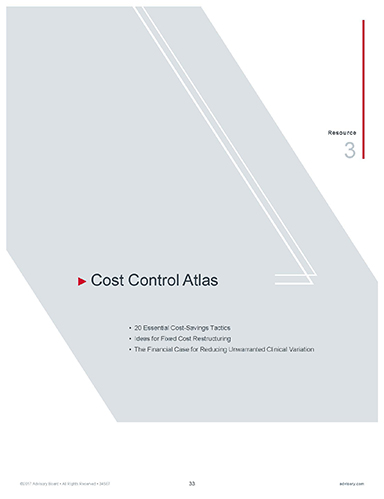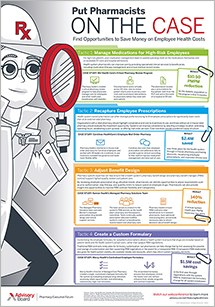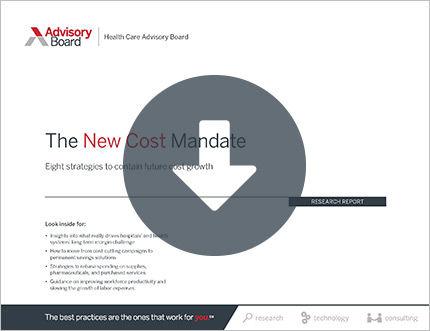Auto logout in seconds.
Continue LogoutA battle between two major health care players in western Pennsylvania could be a harbinger of what's to come nationwide as forces of consolidation bring providers and insurers into each other's domains, Carolyn Johnson reports for the Washington Post.
Learn more: Get 8 strategies to contain future cost growth
A major provider and a big insurer cross into each other's territory
In western Pennsylvania, Johnson writes, there's a "battle" going on between UPMC, a health system known for groundbreaking research and university-affiliated hospitals, and Highmark Health, one of the biggest insurers in the country.
The tension dates back to 2011, Johnson reports. That year, as Highmark faced a request for a major rate increase from UPMC, it announced it would enter the provider space itself by acquiring a hospital system now known as Allegheny Health Network.
UPMC fired back, announcing that it would stop accepting Highmark-insured patients at the end of their existing contract. UPMC also moved aggressively to expand its own health plan.
After state officials intervened, the two organizations extended their contract and came up with an agreement that delayed the separation until mid-2019.
But even though that contract has yet to expire, the Pittsburgh market already has split "into two distinct health-care silos," Johnson writes, with many patients forced to choose sides as they select their insurers and doctors.
How UPMC and Highmark see their futures
UPMC and Highmark both say they're taking the next step in health care's evolution—though they're taking distinct approaches, Johnson reports.
UPMC, Johnson writes, is seeking to invent cutting-edge treatments. The system employs engineers, designers, business analysts, and others to come up with and market new technologies.
UPMC CEO Jeffrey Romoff has compared his system to Amazon, saying, "There's nothing in health care, that we know of, that UPMC doesn't have an entry into that marketplace." And the move to the insurer space, Romoff said, has given the system control of its future.
Highmark CEO David Holmberg, meanwhile, said he wants to focus on providing health care, rather than conducting research. "I want to keep people healthy; I want to keep them out of the hospital," he said. "You're not trying to fill up the hospitals."
For example, Highmark has created a "health and wellness pavilion," where patients are connected with primary care, outpatient care, cancer services, or other services.
To attract patients amid the ongoing dispute, Johnson writes, both players have focused on new ways to improve consumer convenience. UPMC uses community health workers to help patients manage chronic conditions. It also opened a cancer-specific ED.
Highmark, meanwhile, launched a breathing disorders clinic to provide a hub for patients with complex lung diseases, making appointments more centralized. Highmark's Wexford center also has a play area with staff to watch children while parents visit a doctor
Will payer-provider integration lower costs?
According to Johnson, both UPMC and Highmark say that their competition has benefited the Pittsburgh area.
Romoff argues that, although there's been conflict between the systems, "that's what disruption is about," adding, "And let's be clear about this: Without disruption, change is much, much slower."
But it's not clear that the conflict is actually lowering prices in Pittsburgh, Johnson reports. For instance, while premiums for employer-sponsored plans in the area are below the national average, that also was the case before the market dynamics changes, according to a national medical expenditure survey.
Further, medical spending per person in Pittsburgh grew 20% between 2012 and 2016, while the national rate was slower, at 15%, according to an analysis by the Health Care Cost Institute. Linda Blumberg, a senior fellow at the Urban Institute, said she would expect the trend in Pittsburgh to be lower if the systems were creating efficiencies that bend the cost curve.
At the consumer level, patients aren't yet convinced the new configuration is to their benefit, Johnson reports. Sue Kerr, a Highmark member with a UPMC doctor, said, "I call it 'the war.'" She said neither company has made the situation easy. "I suspect what we have is two Goliaths," Kerr added.
The question whether the big players can bring the cost savings they hope for will may ultimately be resolved in 2019, when the separation is complete, Johnson writes (Johnson, Washington Post, 2/13).
Next, get 8 strategies to contain future cost growth
Download our new research report, "The New Cost Mandate," to learn the drivers of the emerging margin management challenge and get a road map of strategic solutions for hospital and health system leaders.
Don't miss out on the latest Advisory Board insights
Create your free account to access 1 resource, including the latest research and webinars.
Want access without creating an account?
You have 1 free members-only resource remaining this month.
1 free members-only resources remaining
1 free members-only resources remaining
You've reached your limit of free insights
Become a member to access all of Advisory Board's resources, events, and experts
Never miss out on the latest innovative health care content tailored to you.
Benefits include:
You've reached your limit of free insights
Become a member to access all of Advisory Board's resources, events, and experts
Never miss out on the latest innovative health care content tailored to you.
Benefits include:
This content is available through your Curated Research partnership with Advisory Board. Click on ‘view this resource’ to read the full piece
Email ask@advisory.com to learn more
Click on ‘Become a Member’ to learn about the benefits of a Full-Access partnership with Advisory Board
Never miss out on the latest innovative health care content tailored to you.
Benefits Include:
This is for members only. Learn more.
Click on ‘Become a Member’ to learn about the benefits of a Full-Access partnership with Advisory Board
Never miss out on the latest innovative health care content tailored to you.



